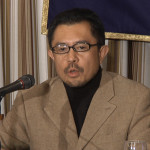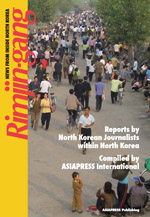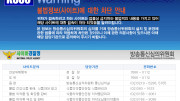 Today I had the chance to meet and hear Jiro Ishimaru of AsiaPress speak at the Foreign Correspondents’ Club of Japan. He was there to talk about how the Japanese news agency manages a small network of North Koreans who report from inside the country and smuggle out images and video.
Today I had the chance to meet and hear Jiro Ishimaru of AsiaPress speak at the Foreign Correspondents’ Club of Japan. He was there to talk about how the Japanese news agency manages a small network of North Koreans who report from inside the country and smuggle out images and video.
The network is fascinating to hear about, as are Ishimaru’s stories about information flow both ways across the Chinese border.
Some snippets:
- Most young people in major cities have seen South Korean TV dramas.
- The dramas are recorded in China from satellite broadcasts and appear quickly in local markets.
- They are smuggled into North Korea, where they are duplicated and distributed on DVD and Video CD.
- Even the wealthy and those with good jobs are bored of propaganda and want to watch something interesting.
- Sometimes the police raid the market, but even the police want to watch the dramas.
 To-date AsiaPress has published its reports in Korean and Japanese, but Ishimaru’s speech was timed to coincide with the publishing of the agency’s first book in English.
To-date AsiaPress has published its reports in Korean and Japanese, but Ishimaru’s speech was timed to coincide with the publishing of the agency’s first book in English.
Called “Rimjin-gang,” the 495-page book is divided into four main sections dealing with the economy, the people, the Kim Jong-Il regime and state oppression.
It’s published by AsiaPress itself.
ISBN: 978-4-904399-05-7
It can be ordered directly from the company and costs 9,000 yen, which is US$112 at the current exchange rate.
I covered the event for IDG and wrote a piece about the use of digital technology by AsiaPress. The digital door to North Korea has already opened.
I think that unless Kim Jong-Il’s administration takes a drastic step of completely banning all forms of digital media, there is no way it can stop the flow of information going into and out of North Korea.
I asked him if he thought this would happen.
I don’t think there is anyway the leaders can put a stop to this.
Here’s the presentation.
The event included an introduction by Bradley Martin, a noted North Korea expert, author and contributor to Global Post. This video includes the presentations of both Martin and Ishimaru and is in four parts. Ishimaru’s video presentation has not been included due to copyright restrictions and a request from Ishimaru.




As editor of Computerworld Hong Kong (an IDG licensee), we picked up this story and ran it in our daily feed. I feel Martyn Williams is doing unprecedented journalism on North Korea, which is why we’ve run his stories in our magazine and online since 2002. I’m delighted to see this story and applaud Mr Ishimaru and the journalists brave enough to get real information out of the country.
My hope is that when regime change happens in NK, they will take the advice China has been giving them for years and establish Special Economic Zones: SEZs proved invaluable in bringing China into the world economy, and while NK has a harder road to travel, the veil is slowly lifting.
Watch this space.
This is pretty much what the locals told me on the train from Shinjuku via Dandong in 2009. If you speak Chinese, you can have a conversation with quite a few Korean guides. They were quite open about watching Chinese drama and TV, especially in the SEZ. Chinese TV plays a fair amount of South Korean period drama, so thats obviously popular.
The more privileged talked about playing on PS3, and had computers that were up to date – Call of Duty 3 (whatever the latest one was in 2009) was quite popular in DPRK – one of our guides raved about playing it for hours.
Most were pretty open that DPRK wasn’t perfect, but they did believe that what they were doing was right.